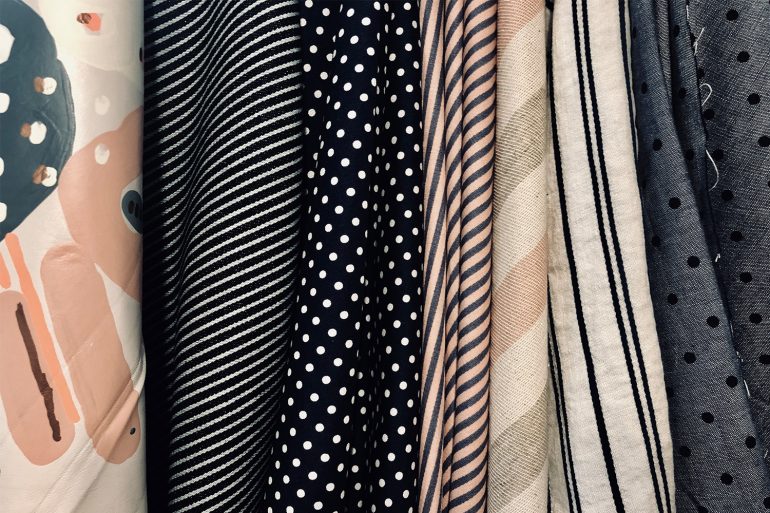When discussing the topic of sustainability and its impact on fashion specifically, we look towards ethical textiles as a foundation for innovation.
Sustainability is practiced through several methods, including a minimized CO2 footprint, upcycling used materials as well as high quality, long-lasting designs. Single handedly, each of these techniques make a difference in the way we treat our environment. With environmental awareness at an all time high, several companies are applying multiple strategies at once, a sustainability powerhouse if you will.
Booming clothing brand, Reformation, takes matters into their own hands. Their fiber materials are sourced locally whenever possible, supporting small businesses while reducing emissions from travel exhaust. Through their partnership with BLUESIGN system, all dyes are carefully monitored through air quality and water emissions to ensure the final product is safe for workers, customers and the environment.
American clothing company Everlane practices sustainability through high quality textiles sourced from countries like Peru and Italy. While selected fabrics may come from overseas, their quality is unparalleled. This means that your new cashmere sweater won’t disintegrate after the third wash and your Pima cotton tee won’t pill or fray.
SCAD fibers administrative assistant, Anastasia MacDonald explains the shearing of goats should occur every two years to ensure the best quality of cashmere as well as the safety of the animal. In response to cashmere’s high demand, each goat is sheared once a year, while their population remains significantly unproportional with the quantity of land. It’s important to keep in mind the wellbeing of wildlife when selecting a brand to purchase from. For Everlane, quality trumps quantity and the result is gratifying.
When considering couture, many fashion houses have turned to vegan leather and high quality faux fur alternatives in respect for our planet’s ecosystem. Maybe you might recall the dramatic incident between Anna Wintour’s fur coat and a cream pie in 2005? Or maybe Kim K’s PETA flour bomb. Leading vegan companies such as Stella MCartney, Ethique212 and Vaute Couture have taken the hint, creating vegan leather products as their contribution to sustainability. You may be wondering, isn’t vegan leather a noxious combination of wax and polyester? London-based leathergoods expert Carmen Hijosa developed a natural, non-woven textile composed exclusively of pineapple leaves. Its soft and flexible elements mimic the characteristics of leather without the harmful side effects.
Eliminating applications of leather and fur is highly beneficial, but it’s important to consider other sustainable alternatives to chemical-doused fabrics such as acrylic, nylon and polyester. Several ethical clothing brands have gotten nifty with the use of hemp and coffee grounds to create an array of sustainable fiber alternatives.
Qmonos, a synthetic fiber woven from spiders, is used to create a durable, lightweight silk that can be implemented into garments. The Spiber textile company which produces the fiber, has teamed up with North Face to create the moon parka, its Qmonos exterior over 340 times more resilient than steel itself.
Each day, we interact with textiles in hundreds of ways. If each of these surfaces become sustainable, consider the significant effect it would have on our ecosystem. Through thoughtful collaboration between science and design, we cultivate a sustainably conscious future for us and our planet.

